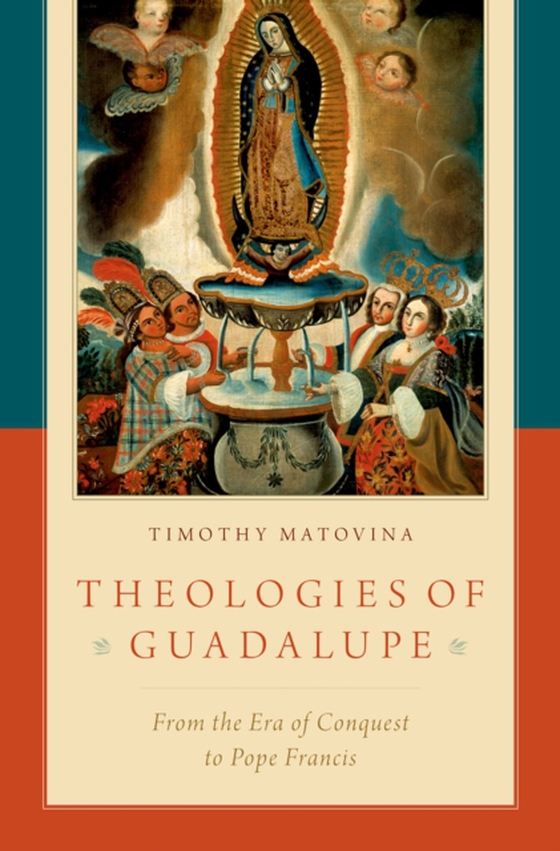
Theologies of Guadalupe e-bog
230,54 DKK
(inkl. moms 288,18 DKK)
Every Spanish-speaking country in Latin America and the Caribbean has its own national representation of the Virgin Mary who is credited with helping to spread Christianity. None of these is more prominent than the Virgin of Guadalupe, patroness of Mexico. According to tradition, the Virgin appeared to a man named Juan Diego on the Hill of Tepeyac, just outside Mexico City, four times in 1531. ...
E-bog
230,54 DKK
Forlag
Oxford University Press
Udgivet
2 november 2018
Længde
224 sider
Genrer
HBTQ
Sprog
English
Format
pdf
Beskyttelse
LCP
ISBN
9780190902766
Every Spanish-speaking country in Latin America and the Caribbean has its own national representation of the Virgin Mary who is credited with helping to spread Christianity. None of these is more prominent than the Virgin of Guadalupe, patroness of Mexico. According to tradition, the Virgin appeared to a man named Juan Diego on the Hill of Tepeyac, just outside Mexico City, four times in 1531. The local bishop doubted his claim until an image of the Virgin appeared on Juan Diego's cloak. That cloak is now among the most popular religious icons in the Americas, and the Virgin of Guadalupe is among the most widely known of Marian apparitions. Our Lady of Guadalupe is also the only Marian apparition tradition in the Americas- and indeed in all of Roman Catholicism- that has since inspired a sustained series of published theological analyses. In Theologies of Guadalupe, Timothy Matovina explores the way theologians have understood Our Lady of Guadalupe and sought to assess and foster her impact on the lives of her devotees since the seventeenth century. He examines core theological topics in the Guadalupe tradition, developed in response to major events in Mexican history: conquest, attempts to Christianize native peoples, society-building, independence, and the demands for justice of marginalized groups. This book tells how, amidst the plentiful miraculous images of Christ, Mary, and the saints that dotted the sacred landscape of colonial New Spain, the Guadalupe cult rose above all others and was transformed from a local devotion into a regional, national, and then international phenomenon. Matovina traces the development of the theologies of Guadalupe from the colonial era to our own time, revealing how Christian ideas imported from Europe developed in dynamic interaction with the new contexts in which they took root.
 Dansk
Dansk

